What is morphological analysis?
Morphological analysis involves identifying problem areas and considering suitable solutions. The analysis is carried out in groups of three to seven people with varying expertise, ensuring a high potential for knowledge and the generation of new ideas. The final implementation usually takes place within a defined time interval, lasting from half an hour to two hours, and is led by a moderator.
The method is mainly used in product development and for problems of which solution components are already known. Therefore, when developing new products, characteristics such as material, colour, or weight should already be known.
Procedure
Morphological analysis is considered a discursive creativity technique that facilitates the systematic breakdown of a solution into its individual components. The application areas and possibilities of this method are diverse. For example, it is suitable for representing different variants as well as for developing new solutions.
A morphological analysis consists of five steps.
Defining the question
It is essential to define the question as precisely as possible while remaining as open as necessary. The aim is to maintain focus without excluding various possible solutions at the outset.
Determining the individual parameters
Using brainstorming, the overall solution is broken down into individual components. Parameters for possible solution ideas must be collected and placed in the so-called morphological box.
Collecting variations
For each parameter, it is determined in which different forms it can be fulfilled. Sensible and changeable variations are then recorded on the x-axis of the morphological box behind the corresponding parameter.
Forming variants
With the morphological box as a tool, theoretically all possible types of solutions can be presented in the penultimate analysis step. Variants are formed by selecting and labeling one variation per parameter.
Selecting and evaluating variants
In the final step, the number of possible variants must be condensed into a promising selection. Various tools are available for evaluation and selection.
Frequently asked questions and answers
In linguistics, morphology is considered the science of form changes. It examines the structures of words and their changes, relating them to meanings and changes in meaning.
In biology, morphology is understood as a form or shape theory. It deals with the shape of the body as well as the structure and spatial relationships of the organs of living beings.
Medically speaking, morphology is the study of form, shape, and structure. The term refers to the description of the external shape of living organisms or their components.
In all areas under consideration, morphology can be defined as a form theory. The term “morphological” is used in many fields, but always has the same basic meaning.
The morphological analysis uses the so-called morphological box, which is a creativity technique developed by physicist and astronomer Fritz Zwicky. Zwicky was concerned with the basic idea of developing concrete products from existing ideas and thus being able to create solutions to problems.
The morphological box examines various combinations and variations of possible solutions. Its application areas are primarily product and process development. Generally speaking, problems for which solution components are already known can be tackled using the morphological box.
Process
The morphological box can be drawn on a flip chart or whiteboard, or simply on paper. It is essentially a table: The first column of this table contains the individual solution parameters, and the other columns list possible variations.
The goal is to create a morphological matrix, or a structured and clear table, with which potential solutions can be formed through combinations of parameter variations.
Sources
- Universität Hamburg. Forschungsthemen. Produktivitätsmanagement für industrielle Dienstleistungen stärken (PROMIDIS). Abgeschlossene Projekte. Instrument Morphologische Analyse. PROMIDIS 11/2015. Fachbereich Informatik – IT-Management und -Consulting (ITMC), Hamburg.
https://www.inf.uni-hamburg.de/de/inst/ab/itmc/research/completed/promidis/instrumente/morphologische-analyse


